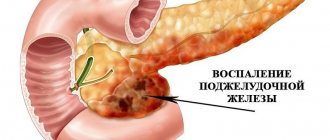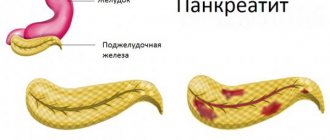Stomach pain is a fairly common complaint among patients.
Such discomfort contributes to a significant decrease in the quality of life, especially if the pain syndrome begins to bother you more and more often. What to do if your stomach hurts and there is an intestinal disorder? Any pain requires finding out the cause of its origin, especially in the stomach area, as it can be a symptom of a serious gastrointestinal disease. Therefore, self-medication in this case is impossible. Careful diagnosis and comprehensive treatment are necessary to prevent the occurrence of stomach pain.
Types and nature of stomach pain
Depending on the course of the pathological process, the pain in nature for each disease will be specific, such as:
- mild and aching pain provoked by eating during chronic gastritis or malignant formation;
- pain in the form of cramps is more typical for functional stomach disorders;
- acute burning pain in the stomach is a sign of a burn to the organ mucosa due to chemical poisoning;
- aching pain in the stomach during a peptic ulcer, sharply intensifying to the feeling of a “dagger strike”, is characteristic of perforation of the ulcer.
As a rule, the appearance of pain of various types in the stomach area is associated with food intake or errors in diet. The pain may be accompanied by heartburn or nausea, and sometimes vomiting. The occurrence of these unpleasant sensations can have a variety of reasons.
How it manifests itself
Actually, the feeling of gastric discomfort is a manifestation of dyspepsia, which can accompany the above diseases. In this case, dyspepsia is a collection of various symptoms of the digestive system, and not a separate disease. There is also functional dyspepsia, which refers to functional stomach disorders. It manifests itself as discomfort: heaviness in the stomach, fullness, early satiety and pain in the epigastric region.
Functional gastric dyspepsia is observed in the absence of organic lesions in the stomach and intestines. If there are changes in the gastric mucosa, they are reversible. The feeling of discomfort has nothing to do with eating or physical activity.
Previously, depending on the clinical picture, dyspepsia was divided into:
- reflux-like;
- dyskinetic;
- ulcer-like.
Functional dyspepsia manifests itself in this way:
- Reflux-like dyspepsia is characterized by heartburn, acid regurgitation, and a feeling of burning pain in the chest.
- A person complains of discomfort in the stomach immediately after eating, nausea, and bloating. Sometimes vomiting is observed, after which relief is noted. These symptoms are characteristic of dyskinetic dyspepsia.
- With ulcer-like dyspepsia, severe hunger pain is observed at night. Most often it appears after experiencing severe stress. Another distinctive sign of ulcer-like dyspepsia is a feeling of fear when pain occurs.
Important! With functional dyspepsia, blood never appears in the stool, anemia does not develop, a person does not lose weight, dysphagia (swallowing disorder) is excluded, but, as a rule, it is accompanied by many neurotic symptoms: weakness, psycho-emotional lability, irritability, unmotivated changes in mood.
Nausea
Stomach discomfort is often combined with nausea. Nausea is not a disease, it is just a separate symptom, often leading to vomiting. This sensation is directly related to decreased activity of the stomach, functional - motor changes in the functioning of the duodenum and small intestine, and nervous disorders.
If nausea along with stomach discomfort occurs after eating, you should definitely consult a doctor. This may be due to a stomach disease or a disorder in the nervous system.
In no case should you relieve stomach pain and discomfort on your own, especially if the disorders occur systematically. It is better to consult a doctor who will conduct the necessary research and prescribe effective treatment.
Possible causes of stomach pain
The appearance of aching pain in the stomach can have origins both related to the pathology of the organ itself and to other organs of the abdominal cavity. The most common causes of pain in the stomach are:
- gastritis is an inflammatory process in the gastric mucosa, which causes the most frequent occurrence of pain;
- ulcer of the stomach and duodenum;
- benign tumors ( polyps ) cause pain, but in rare cases;
- malignant volumetric process - as it develops, it begins to manifest itself as aching pain in the stomach associated with eating;
- acute food poisoning , accompanied by pain, caused by spasm of the smooth muscles of the stomach;
- burn of the gastric mucosa , causing pain due to chemical aggressive agents entering the stomach;
In addition to pathology from the stomach, aching pain can be caused by a pathological process in other organs of the abdominal cavity. These may be the following diseases:
- diaphragmatic hernia - periodic migration of organs from the abdominal cavity into the chest through a pathological diaphragmatic opening;
- pancreatitis is an inflammatory process in the pancreas, anatomically adjacent to the posterior wall of the stomach;
- esophagitis - inflammation of the mucous membrane of the lower esophagus entering the stomach;
- functional stomach disorders, causing pain due to a malfunction of the nervous system;
- various pathological processes of the liver;
- diseases of the large intestine, in particular colitis, which gives intense pain in the upper abdomen, which subsides after 2-3 days, but remains and is permanent.
Painful sensations in the stomach can have other causes. As a rule, a pathological process in the digestive system, accompanied by pain, is most often a serious disease. But what to do if you have stomach pain and how to get rid of it?
In this case, the pain syndrome, regardless of the process of its occurrence, cannot be treated independently. First of all, you need to contact a specialist who, having found out the cause of this negative phenomenon, will prescribe treatment.
Feeling of a lump in the stomach
Gastritis
33292 21 August
IMPORTANT!
The information in this section cannot be used for self-diagnosis and self-treatment.
In case of pain or other exacerbation of the disease, diagnostic tests should be prescribed only by the attending physician. To make a diagnosis and properly prescribe treatment, you should contact your doctor. Feeling of a lump in the stomach: causes of occurrence, what diseases it occurs with, diagnosis and treatment methods.
The feeling of a coma in the stomach is described when one experiences a feeling of heaviness, discomfort and fullness in the stomach, even when it is only slightly filled. Sometimes patients find it difficult to determine the exact location of the coma and point to the lower third of the sternum or solar plexus. In some cases, a feeling of a lump and cramps in the stomach may occur on an empty stomach.
Types of feeling of a coma in the stomach
A feeling of heaviness or coma in the stomach can be an independent symptom, but may be accompanied by other unpleasant sensations. Sometimes it is heartburn, sour belching, bloating, constipation.
In some cases, a feeling of a lump appears when swallowing
, making it difficult for chewed food to pass through.
In addition, patients may complain that food did not enter the stomach, but stopped in the esophagus.
In such patients, vomiting of unchanged food is possible. When describing symptoms, you should pay attention to the time of onset of discomfort - before
or
after eating
.
The patient may feel heaviness in the stomach with pain or heartburn, on an empty stomach or after eating, and night pain also occurs.
Sometimes the sensation of a lump in the stomach occurs
regardless of food intake
.
In such cases, they complain of stomach spasms
, sometimes accompanied by a feeling of a lump in the throat.
What diseases cause a sensation of a lump in the stomach?
Eating more than your usual amount of food
, accompanied by a feeling of fullness and heaviness in the stomach. This condition is not a manifestation of the disease and goes away on its own after some time.
It should be noted that stomach capacity varies depending on eating habits.
People who are small or
have undergone gastric resection
can eat a small portion, otherwise they will not only experience a feeling of heaviness or fullness in the stomach, but also vomiting.
A sensation of coma may occur when consuming foods that cause excess gas.
, as well as
food that is difficult to digest
(salads with mayonnaise, fatty, fried and smoked dishes) and
highly carbonated drinks
.
When eating dry and hastily,
an unpleasant sensation in the epigastric region is caused by poor processing of the food bolus with saliva and insufficient secretion of gastric juice.
However, a feeling of coma or discomfort in the stomach, or more precisely, in the epigastric region, may appear after eating even a small amount of food
.
This condition can be caused by diseases of the gastrointestinal tract or other reasons.
First of all, they assume indigestion, or functional dyspepsia. Its symptoms most often include pain and discomfort immediately after eating, a feeling of heaviness and fullness in the stomach, heartburn, belching, nausea, sometimes vomiting, reflux of stomach contents into the esophagus, bloating and bowel dysfunction.
Dyspepsia can be a symptom of both functional disorders of the gastrointestinal tract and organic diseases.
Functional causes of dyspepsia are often caused by errors in diet and medications.
Iron ions have an irritating effect on the gastric mucosa, which is most pronounced when taking medications based on ferrous iron. Nonsteroidal anti-inflammatory drugs, which are systematically taken for rheumatic and non-rheumatic diseases of the musculoskeletal system, also cause undesirable effects: heaviness and discomfort in the stomach, nausea, vomiting, and dyspeptic disorders.
Neurological disorders
(neuroses, depression), psychological trauma almost always affects the state of the gastrointestinal tract, leading to impaired motility.
Functional dyspepsia is not accompanied by erosive or ulcerative lesions of the stomach; its symptoms disappear when the general state of health is normalized.
One of the common causes of discomfort in the stomach immediately after eating is
gastritis
. It is accompanied by functional and inflammatory processes that have a negative effect on the gastric mucosa. Symptoms of gastritis include heaviness and pain in the stomach, indigestion, nausea, heartburn, sour belching and bloating when eating any food. The inflammatory process leads to atrophy of the mucous membrane and disruption of the glands that secrete gastric juice.
Insufficient gastric juice and weak peristalsis of the stomach and intestines make it difficult to digest food.
Gastritis is often accompanied by dyspepsia. In addition to a feeling of heaviness and aching pain in the epigastric region after eating, poor appetite, weakness, fatigue, and irritability are noted. When pressing on the abdomen, a dull pain appears in the projection of the stomach.
Impaired motor-evacuation functions
upper digestive tract is always accompanied by a feeling of coma or a feeling of heaviness in the stomach. Disorders of esophageal motility are usually caused by incoordination of the esophageal sphincters. Uncoordinated work of the esophageal muscles can lead to a delay in the bolus of food on the way to the stomach, the reflux of food particles into the respiratory tract, and reflux (return of stomach contents into the esophagus). Impaired gastric motility leads to slow emptying, which is accompanied by a feeling of heaviness and fullness even with a small amount of food consumed, pain in the epigastric region, heartburn, nausea and vomiting.
Motility disorders of the esophagus and stomach may be associated with gastroesophageal reflux disease, gastritis, tumors and stenoses (narrowings), metabolic disorders (hyperkalemia, hypercalcemia), postoperative complications of gastrectomy, taking certain medications (opiates, antidepressants, hormones), alcohol and nicotine .
Peristalsis worsens with a sedentary lifestyle and with age.
Stomach cancer can also cause symptoms such as a feeling of heaviness or a lump in the stomach. Moreover, depending on the location of the tumor, its manifestations vary. If the tumor is located closer to the esophagus, problems with swallowing food occur. This is accompanied by increased salivation, nausea, vomiting, and pain in the epigastric region. When the tumor is localized in the lower parts of the stomach, closer to the duodenum, a prolonged feeling of heaviness after eating and bloating is characteristic. When burping, a putrid odor may be felt.
Which doctors should you contact if you feel a lump in your stomach?
If there is a constant feeling of a lump in the stomach or a feeling of heaviness, it is necessary to contact or to make a preliminary diagnosis. The gastroenterologist may also refer the patient to an oncologist. A consultation may also be required.
Diagnosis and examination if you feel a lump in the stomach
First of all, clinical blood and stool tests are necessary for differential diagnosis.
What examination needs to be done
Any pain localized in the stomach area requires mandatory examination, which consists of the following measures:
- collecting an anamnesis of the disease - when the pain appeared, what nature it is, how often and for how long it bothers you, whether it is associated with food intake or appears on an empty stomach, where it is most often localized;
- objective data - include examination of the oral cavity, whether there is plaque on the tongue and, if so, what color. The abdomen must be palpated to determine the presence or absence of pain, and in which area. Whether there is an enlargement of the abdominal organs or not, that is, the symptoms of the disease are revealed;
- laboratory testing - blood and urine for general analysis, feces for occult blood, gastric juice analysis, biochemical blood test, if indicated, blood for tumor markers;
- instrumental examination - ultrasound of the abdominal cavity, MRI, gastrofibroscopy.
As a rule, such an examination allows you to find out the cause of stomach pain and prescribe quality treatment. In some cases, during differential diagnosis, material is taken for a biopsy from the problem area of the organ and its subsequent histological examination.
Baking soda solution
Baking soda is a well-known folk remedy for combating indigestion and stomach pain. The substance helps to neutralize the activity of hydrochloric acid, the excess of which is produced by local secretory glands.
There are several ways to treat stomach pain with baking soda:
- Take half a dessert spoon of the substance. Dissolve the product base in a glass of cold water. Stir vigorously and immediately drink the entire volume of liquid in one sitting. The solution makes it possible to eliminate gas formation in the stomach almost instantly.
- Mix a teaspoon each of baking soda and citric acid. Add a small pinch of kitchen salt. Dissolve the ingredients in a glass of warm water. Drink the product in one gulp. Soon active belching will begin to be noted, which indicates the release of gases, which cause bloating and the development of discomfort.
First aid for stomach pain
Providing first aid for stomach pain is important for many patients. Pain can occur even in people who do not have digestive problems.
This may be simple overeating, drinking alcohol or fatty foods in large quantities, an allergic reaction of the body to certain foods, physical fatigue or a stressful state. Minor periodic pain in the stomach can occur in women during pregnancy, when the growing uterus begins to put pressure on neighboring organs.
As a rule, such stomach pains are temporary and do not appear again when the cause is eliminated. What to do if you have a stomach ache? In this case, it is necessary to assist the patient by performing the following measures:
- put the patient in bed and unfasten the clothes that are compressing the abdominal area;
- to relieve spasms of the smooth muscles of the stomach, the use of non-carbonated mineral water or no-shpa tablets is recommended;;
- Drinking warm mint tea has a good effect in relieving pain.
If stomach pain appears due to a stressful situation, the use of mild sedatives, such as valerian, motherwort, has a beneficial effect on the stomach and relieves pain.
If pain in the stomach is caused by drinking alcohol, to relieve the pain you need to rinse the stomach with regular boiled water. After removing the remaining alcohol, you can use activated carbon and a spoon of vegetable oil. But if the pain does not go away within several hours, consultation with a specialist is necessary.
Treatment
Stomach pain can be of different types, and as we have already found out, it can appear due to a variety of problems. The easiest way to relieve the disease is to take medication
. The most common medications for pain relief:
- pancreatin;
- no-shpa;
- Almagel;
- Maalox;
- spasmalgon;
- Nurofen;
- drotaverine;
- mezim;
- espumizan;
- phosphalugel.
There are quite a large number of them, all of them are prescribed by doctors depending on the problem of the appearance of the symptom. All of the listed medications normalize the condition of the stomach and pacify pain.
. If after taking the pill the pain subsides, then do not forget that this may happen again.
The best next step is to go to the doctor for examination. You should also carefully review your usual diet.
.
Treatment of any disease of the gastrointestinal tract begins with proper nutrition
. The following should be excluded:
- roast;
- fat;
- spicy;
- bread and pastries;
- alcohol;
- coffee;
- strong tea;
- cigarettes;
- sour foods.
Even if an unpleasant symptom appears occasionally, you should try to follow these food intake recommendations. Thus, you can prevent the possible occurrence of illness and various diseases.
Treatment with medications
Painful sensations in the stomach appear and depend on a number of reasons that cause this unpleasant state of the body. Drug treatment is aimed at eliminating inflammation in the mucous membrane of the organ and relieving pain in the stomach:
- for gastritis and stomach ulcers, accompanied by belching, heartburn, nausea, the use of drugs that reduce the production of hydrochloric acid and relieve irritation of the organ mucosa is indicated - Gastal , Almagel , De-Nol , Gastrofarm ;
- for pain caused by errors in eating against the background of gastritis with low acidity, accompanied by heaviness in the stomach - Festal , Mezim Forte , Enzistal , Pancreatin ;
- for painful sensations in the organ caused by poisoning and accompanied by intoxication of the body with fever and vomiting - Polysorb , Enterosgel , Smecta ;
- for inflammatory and infectious processes caused by microbial or viral infection - broad-spectrum antibiotics;
- pain in the stomach during chemotherapy, accompanied by diarrhea, flatulence as a result of the toxic effect of this treatment method - No-shpa , Almagel , Imodium , Espumisan .
It is possible to treat stomach pain with medications only on the recommendation of a doctor after determining the cause of the pain syndrome.
Types of drugs
Stomach pain can be temporarily relieved if you take the right medication. Most drugs have an analgesic effect, namely relaxes muscles, relieves spasms, and reduces pain. At the moment, there are several types of tablets that help cope with such a problem as stomach pain, namely:
- Antacids - neutralize gastric juice, reduce the amount of hydrochloric acid in the stomach, regulate acidity. Extremely effective.
- M-cholinergic receptor blockers. They reduce the tone of the stomach muscles, which reduces pain, and also affects the secretory ability of tissues.
- Proton pump inhibitors reduce the secretion of hydrochloric acid by affecting enzymes in the stomach. They are characterized by slow action.
- Agents that suppress H-receptors reduce the production of hydrochloric acid and pepsin.
- Anti-stress medications regulate the functioning of the nervous system, help restore muscle tone and the entire body.
For stomach pain, most drugs have approximately the same effect. They reduce the amount of aggressive substances and relax muscles
. All drugs work temporarily, but the duration of action may vary. It is necessary to use each drug only under certain conditions, since in some situations even a medicine can turn out to be a poison for the body. For chronic gastrointestinal diseases, antacids and proton pump inhibitors are used, and slightly less frequently, H-receptor suppressors. If pain occurs due to an external irritant, then use any available type of analgesic.
What to do for pain at home
If your stomach hurts, what can you do at home and how to relieve the pain? In this case, the use of folk remedies in the form of various decoctions or infusions gives a positive result in relieving pain. The most popular and most effective are the following recipes:
- drinking freshly squeezed cabbage juice (200 ml) with a tablespoon of honey;
- drinking freshly squeezed potato juice (200 ml) with a tablespoon of honey;
- drinking warm olive or sea buckthorn oil, 15 g 4 times a day;
- infusion of flax seeds;
- infusion of calamus root;
- infusion of chamomile, mint, calendula in equal proportions.
The preparation of infusions is carried out in the proportion of 1 tablespoon of medicinal raw materials per glass of boiling water, followed by infusion for an hour and consumption of 100 ml three times a day. The use of traditional medicine is also possible on the recommendation of a specialist.
Sea buckthorn juice
What to do if, against the background of exacerbation of gastritis, there is severe pain in the stomach? How to quickly relieve discomfort? In such a situation, sea buckthorn juice will come to the rescue. The use of the product ensures systematic healing of the surface of the ulcer and helps eliminate discomfort.
Perform treatment based on the following scheme:
- Prepare several glasses of ripe sea buckthorn berries.
- Grind the raw materials thoroughly.
- Strain the juice through cheesecloth into an enamel saucepan.
- Let the product sit thoroughly in the refrigerator.
- Carefully remove the fat film formed on the surface of the sea buckthorn juice and consume a dessert spoon before each meal.
- Perform therapy daily for ten days.
- If persistent pain returns, repeat the course of treatment.
When an emergency visit to a doctor is required
Sometimes, acute pain in the stomach requires emergency medical care, since the developing pathological condition can pose a threat to the patient's life. Acute conditions that require immediate consultation with a specialist include:
- perforation of a stomach ulcer - a characteristic feature is the appearance of acute pain, forcing the patient to take a certain position in order to reduce its intensity. The pain syndrome is accompanied by weakness, increased cold sweating, a drop in blood pressure and a rapid pulse;
- poisoning by chemicals entering the stomach from the outside;
- blunt abdominal trauma accompanied by acute pain.
Any acute pain in the stomach that persists for a sufficient time and is accompanied by a deterioration in the patient’s general condition requires emergency assistance. If the pain is minor and its relief is successful, a visit to a doctor is indicated as planned for diagnosis and quality treatment.
Only timely identification of the causes of stomach pain and prevention of its development will help the patient maintain his quality of life at a high level.
Congee
If you experience severe, persistent indigestion, accompanied by pain, we recommend using rice water, which has a fixing effect. The product acts as a source of fiber that envelops the mucous membranes of the digestive organs. The result of therapy is the calming of local tissues and the elimination of inflammatory processes.
Prepare half a cup of rice. Rinse the cereal several times with warm water. Place the raw materials in an enamel saucepan. Pour the medicine base with 5-6 glasses of water. Bring the liquid to a boil over moderate heat. Cover the container with a lid and wait until the rice becomes soft.
Strain the broth through cheesecloth. Add a few teaspoons of honey to the liquid. Drink the entire volume of the product that has cooled to room temperature. Soon the stomach pain will noticeably subside. You can use the remaining rice to prepare the next batch of healing broth.
Common causes of stomach discomfort
Every person at least once in his life has encountered such a phenomenon as a burning sensation in the stomach. The reason for this is irritation of the walls of the stomach due to its disease or the influence of certain products.
Often discomfort occurs after a quick snack with a large portion of food. In this case, unpleasant sensations often manifest themselves in the esophagus in the form of heartburn. Such stomach problems, the symptoms of which appear regularly, should not be ignored, because it can start with a mild inflammation and end with a severe ulcer. Other causes of burning in the stomach and esophagus may include:
- enzyme deficiency - with this disorder, food cannot be digested normally, it accumulates, which causes burning and discomfort; special medications are prescribed to normalize the secretion of enzymes;
- lack of a diet - quick snacks, infrequent meals, overeating, eating on the go and while doing other things;
- stress - disorders of the nervous system affect the functioning of the stomach and intestines, because they are extremely sensitive to experiences and nervous stress, and if at first this manifests itself as rare symptoms, then the consequence may be the development of stress gastritis with all the ensuing consequences.
Often this symptom is provoked by diseases of the gastrointestinal tract. This can include pathologies of the esophagus, stomach, liver, and intestines. Some of them only make themselves felt by abdominal discomfort for a long time, so it would be wrong to ignore this symptom.
Also, discomfort in the lower abdomen in men and women can be caused by urolithiasis, kidney and liver diseases. If you have the symptoms described above, you should consult a doctor and not self-medicate. Otherwise, extremely severe complications may develop.
Plantain and honey
Take a large bunch of plant shoots. Grind the raw materials using a meat grinder. Place the resulting mass in cheesecloth and remove the juice. Combine the raw materials with liquid honey in the amount of 0.5 liters. Place the mixture in an enamel saucepan. Keep the product on low heat for 20 minutes, stirring the mixture occasionally with a wooden spoon. Allow the medicine to cool to room temperature. If you experience regular stomach pain, consume a few dessert spoons of the healing decoction 3 times a day.











